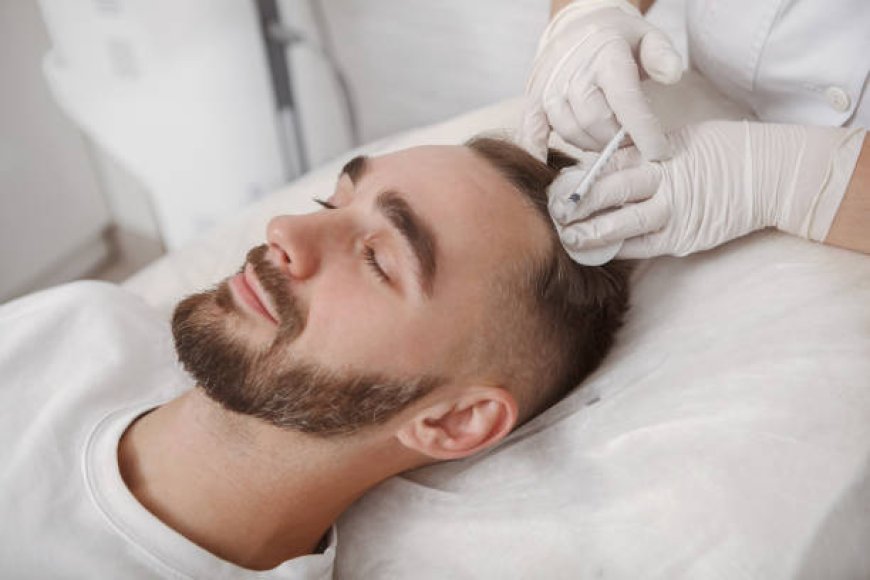Hair Loss Treatments: Your Path to Regaining Confidence
Hair loss can be a challenging experience, but a range of treatments is available to help manage and potentially reverse the condition.

Hair loss affects millions of people globally, impacting self-esteem and overall well-being. Whether due to genetic factors, medical conditions, or lifestyle choices, hair loss can be a challenging issue. Fortunately, various treatments are available to help manage and potentially reverse this condition. This comprehensive guide explores common types of

to help you navigate your options and find the solution that works best for you.
Understanding Hair Loss
Hair loss, or alopecia, comes in several forms, each with distinct characteristics:
Androgenetic Alopecia: Also known as male-pattern or female-pattern baldness, this is the most prevalent form of hair loss. It is largely genetic and characterized by gradual thinning. In men, it often begins with a receding hairline and thinning at the crown. In women, it typically manifests as diffuse thinning across the entire scalp.
Alopecia Areata: This autoimmune disorder leads to sudden, patchy hair loss. The immune system mistakenly attacks hair follicles, resulting in small, round bald patches. In severe cases, alopecia areata can cause complete hair loss on the scalp or body.
Telogen Effluvium: This condition involves widespread thinning of hair due to a large number of hair follicles entering the resting phase (telogen) simultaneously. It is often triggered by stress, illness, or hormonal changes, leading to noticeable thinning over time.
Traction Alopecia: Caused by prolonged tension or pulling on the hair, often from tight hairstyles like braids or ponytails. If detected early, traction alopecia can usually be reversed by changing hairstyles and reducing hair tension.
Effective Medical Treatments
Several medical treatments can effectively address hair loss. Here are some of the most commonly used options:
Minoxidil: Available over-the-counter in 2% and 5% formulations, minoxidil is a topical treatment applied directly to the scalp. It works by stimulating hair follicles and extending the growth phase of hair. Many users experience noticeable regrowth and thicker hair, though results can vary. It often takes several months to see significant improvement.
Finasteride: A prescription oral medication, finasteride is used primarily for male-pattern baldness. It works by inhibiting the enzyme that converts testosterone to dihydrotestosterone (DHT), a hormone linked to hair follicle shrinkage. Clinical studies show that finasteride can effectively slow hair loss and promote regrowth in many men.
Platelet-Rich Plasma (PRP) Therapy: This treatment involves drawing a patient’s blood, processing it to concentrate the platelets, and injecting the plasma into the scalp. PRP contains growth factors that can stimulate hair follicle activity and promote hair growth. Multiple sessions are usually required, and results can vary.
Hair Transplant Surgery: For more advanced hair loss, hair transplant surgery can offer a more permanent solution. Techniques like Follicular Unit Transplantation (FUT) and Follicular Unit Extraction (FUE) involve moving hair follicles from a donor site (usually the back of the head) to thinning or balding areas. While effective, this option is costly and requires a recovery period.
Lifestyle and Home Remedies
In addition to medical treatments, certain lifestyle changes and home remedies can support hair health and potentially slow hair loss:
Balanced Diet: A diet rich in essential nutrients such as iron, zinc, biotin, and protein is crucial for healthy hair. Incorporate foods like leafy greens, nuts, seeds, and lean proteins to provide the necessary vitamins and minerals for hair strength and growth.
Stress Management: Stress is known to contribute to hair loss. Managing stress through practices like meditation, yoga, and regular exercise can benefit hair health and overall well-being.
Scalp Care: Maintaining a healthy scalp environment is vital for hair growth. Regularly massaging the scalp can improve blood circulation and support follicle health. Additionally, avoiding harsh chemicals and minimizing heat styling can prevent further damage.
Essential Oils: Certain essential oils, such as rosemary, peppermint, and lavender, are believed to stimulate hair growth. When diluted with a carrier oil and massaged into the scalp, these oils may help enhance hair follicle activity and improve overall scalp health.
Emerging Treatments
Ongoing research is bringing new and promising treatments for hair loss:
Low-Level Laser Therapy (LLLT): LLLT uses low-level lasers to stimulate hair follicles and promote growth. While the exact mechanism is not fully understood, studies suggest that this non-invasive treatment can improve hair density and quality.
Stem Cell Therapy: Stem cell therapy aims to regenerate hair follicles using stem cells. Though still experimental, early research indicates that this innovative approach could revolutionize hair loss treatment in the future.
JAK Inhibitors: Originally developed for autoimmune diseases, JAK inhibitors have shown potential in treating alopecia areata by blocking the immune response that targets hair follicles.
Conclusion
Hair loss can be a challenging and emotionally taxing experience, but various treatments are available to help manage and potentially reverse the condition. From medical treatments like minoxidil and finasteride to lifestyle changes and emerging therapies, there are numerous options to explore. Consulting with a healthcare professional is crucial to developing a personalized treatment plan and achieving the best results.
By understanding the causes of hair loss and considering the available treatments, individuals can take proactive steps to improve their hair health and regain their confidence. Whether through traditional methods, lifestyle adjustments, or cutting-edge innovations, effective solutions are available to address hair loss and enhance self-esteem.












